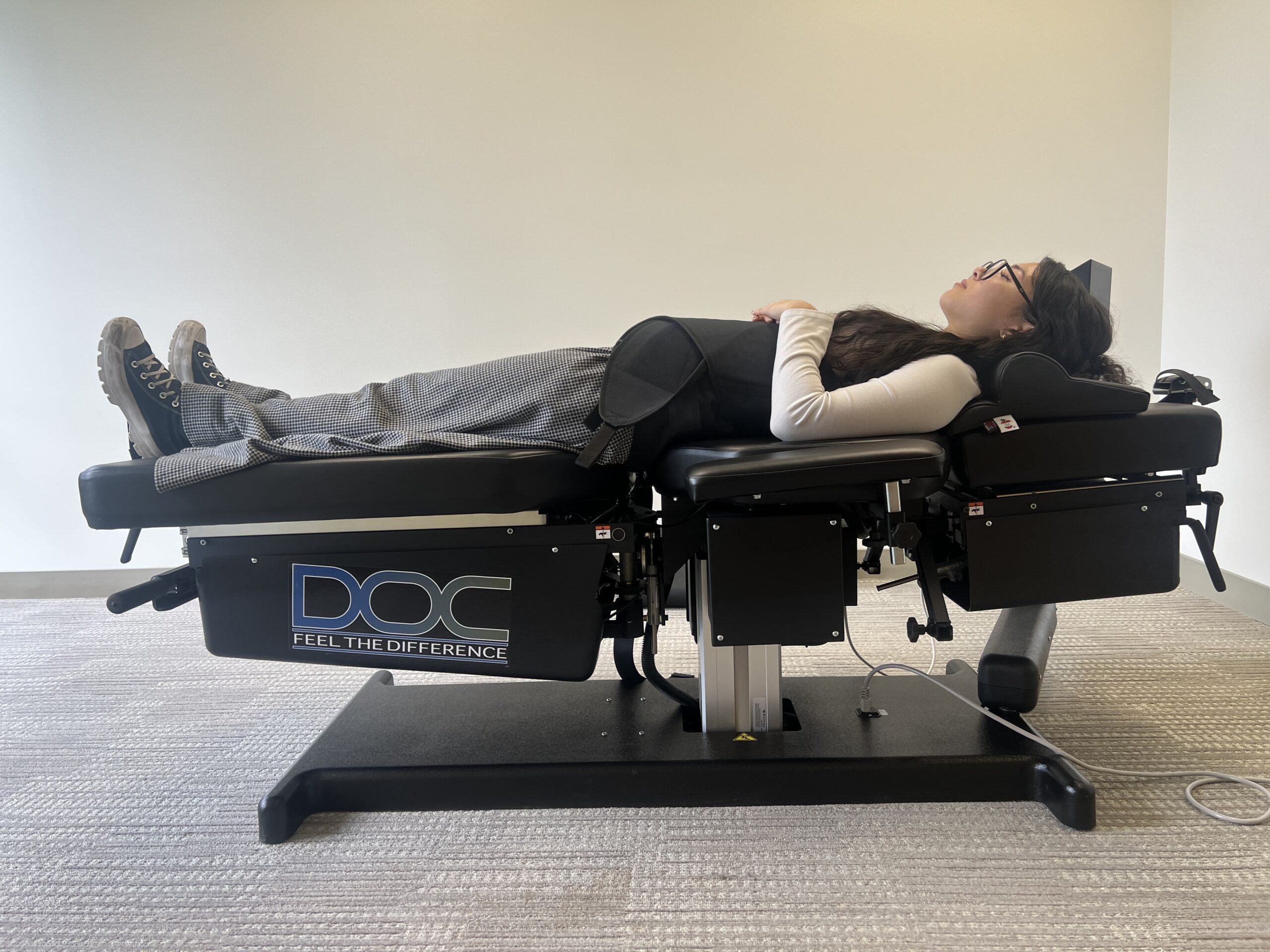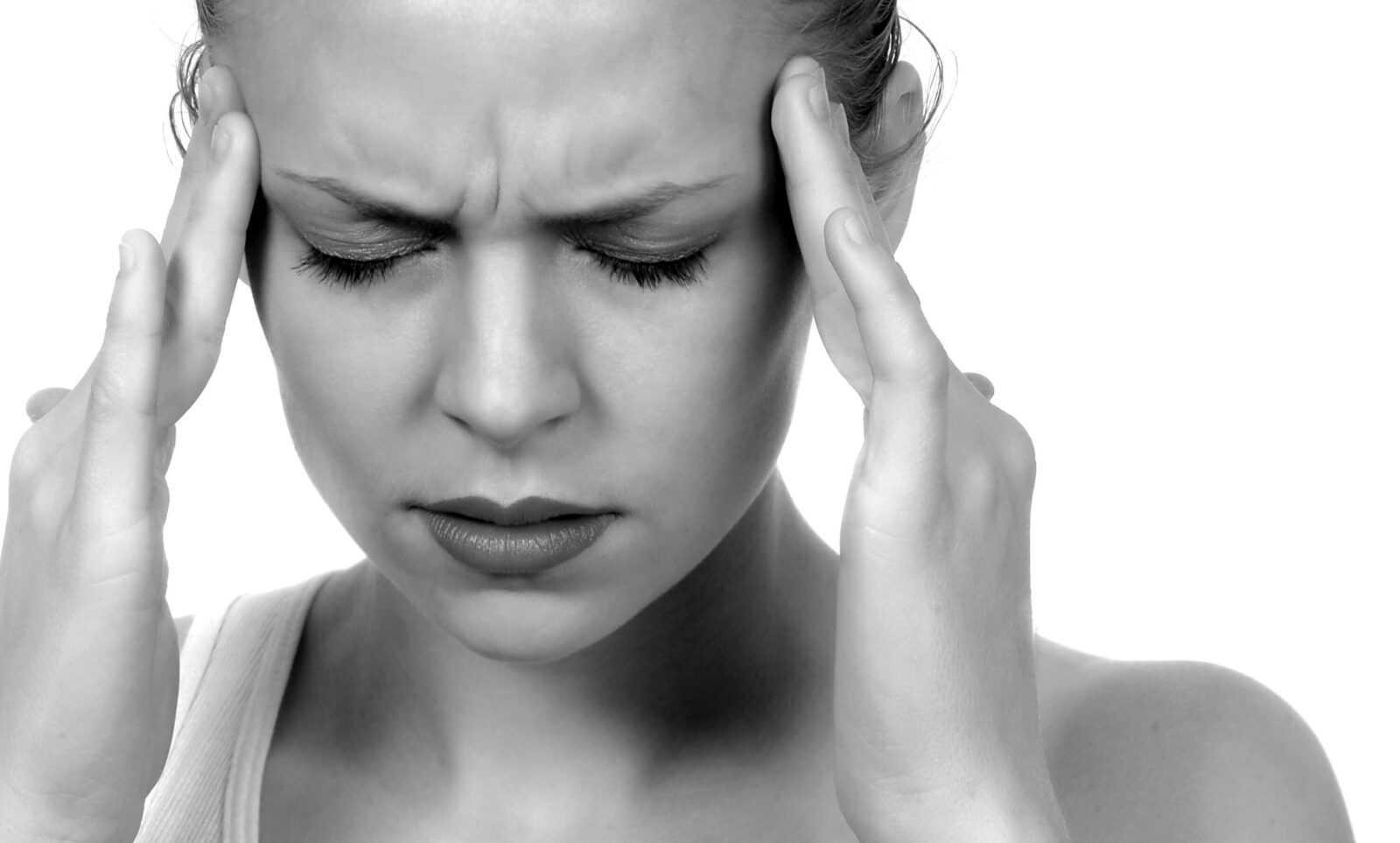Back pain is sneaky. One day you’re tying your shoes, the next you’re Googling “how to fix a herniated disc” and wondering if you’ll ever touch your toes again. Vertebral decompression therapy may be the answer.
You’ve tried rest. Over-the-counter pain relievers and sciatica stretches give you no lasting effects. And you want to stay off the surgeon’s table unless you have no other options.
It may be time to consider this targeted solution for long-lasting relief.
No surgery. Just that unexplainable feeling of finally being free from pain.
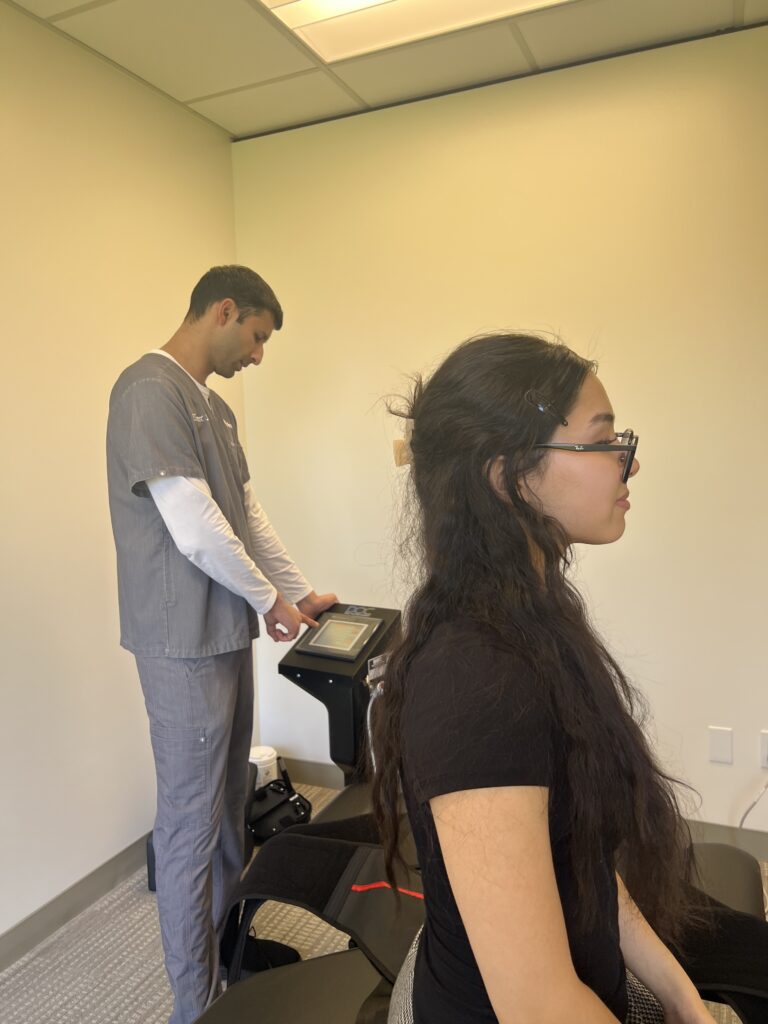
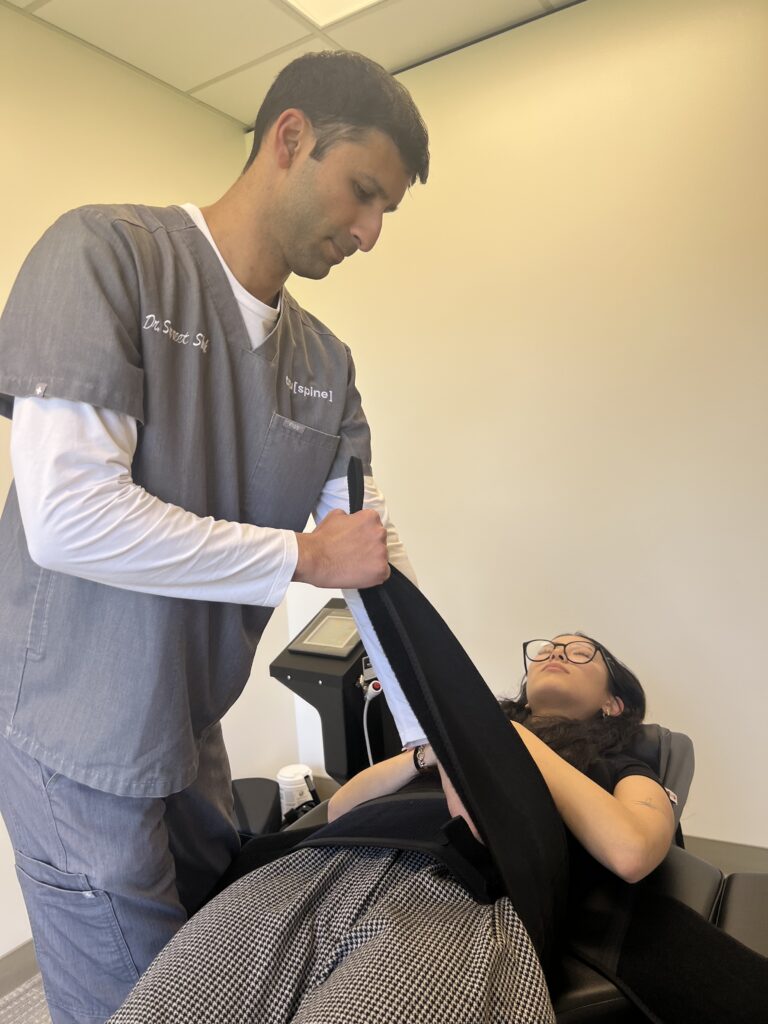
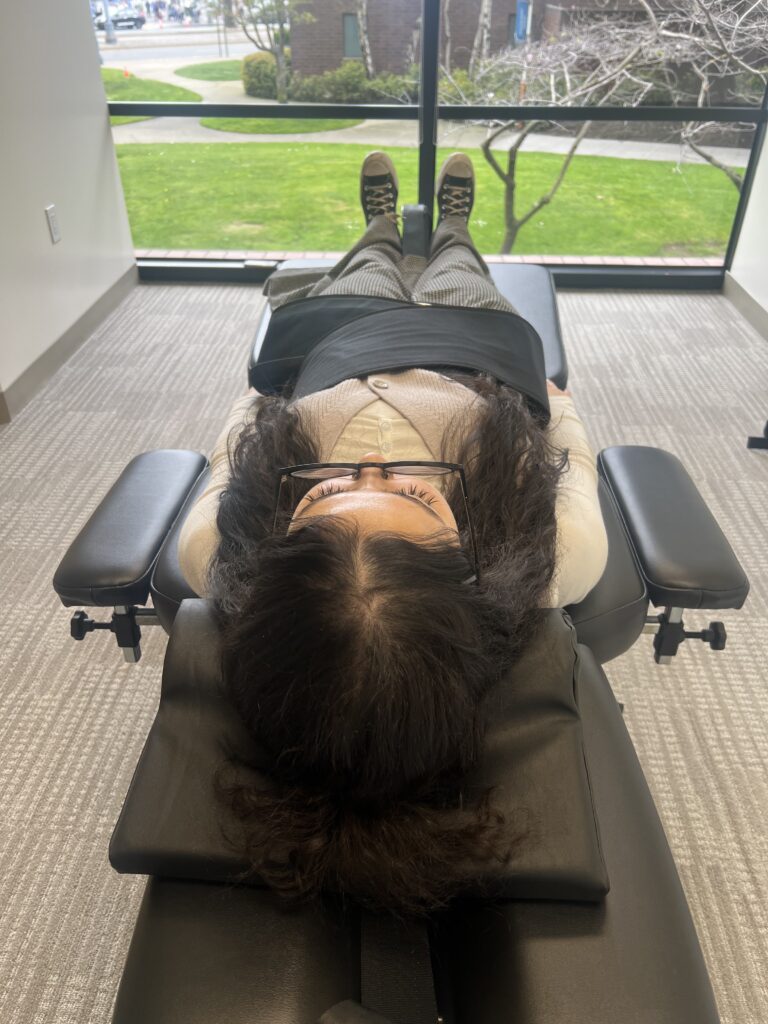
What Is Back Decompression?
Vertebral decompression therapy is a non-surgical therapy that uses a specialized spinal decompression inversion table to gently stretch your spine and take pressure off the discs and nerves—improving mobility in the spine and helping your body heal naturally.
Our Truspine chiropractors use a state-of-the-art table that can target the exact vertebrae causing problems. We can then guide the table to:
- Restore the usual space in your spine
- Encourage bulging discs (the cushions between individual back bones) to retract into place
- Provide the spinal nerves the room they need to heal naturally and transmit messages correctly
All of this adds up to relief.
Within just the first session of a decompression treatment, you can experience freedom from overwhelming back pain, nerve pain, neck pain, back of leg pain, and hip pain. After a few sessions, you can achieve notable improvements in how you move and feel as you continue to pursue the active lifestyle you want to live.
So, whether you’re an athlete training for your next event or someone who wants to again enjoy the independence of performing activities of daily life (ADLs) without assistance, it’s time to stop wondering if vertebral decompression for back might be right for you.
Here are 7 signs you might be the perfect candidate.
1. You’ve Been Diagnosed With A Herniated Or Bulging Disc
Let’s start with the obvious.
If your back pain doctor or chiropractor has mentioned a herniated disc in the back or a bulging disc in the cervical spine (neck), your pain likely comes from pressure on spinal nerves. Your backbones have become compressed. They’re rubbing together as the discs move out of place and even herniate (rupture).
And it’s interfering with critical nervous system signals.
That pressure causes symptoms like:
- Neck pain or shoulder blade pain
- Back of leg pain, usually sharp and shooting (classic sciatica)
- Numbness or tingling in the shoulders, arms, hands, legs, and feet
- Muscle weakness in arms or legs as nerves are misfiring and can’t communicate with the body
Discs can herniate in different areas. A herniated disc in the lumbar region causes low back and leg pain, while a herniated disc in the neck often triggers back, shoulder or arm pain and tingling and sometimes persistently recurring headaches.
You may have seen a herniated disc on an MRI or even a ruptured disc on an X-ray. If not, our chiropractors specialize in bulging disc therapy and treatment. We can order the necessary imaging to confirm your diagnosis. Before-and-after images will allow you to see for yourself how vertebral decompression therapy improves the structure of your spinal column.
2. You’re Experiencing Sciatica Or A Pinched Nerve
If your pain travels, it’s probably nerve-related.
Sciatica is one of the most common symptoms we treat with spinal decompression lumbar therapy. With this condition, pinched nerves in the lower back cause a sciatica flare-up that runs from the lower back, into your hip, and usually down one or both legs.
You might also be able to feel:
- A pinched nerve in the spine (although often you can’t feel it in your back)
- Back of leg pain that worsens when sitting or standing for extended periods
- Shooting sensations in your buttocks or thighs that can make walking normally unbearable.
If your pinched nerve in the cervical spine is the culprit, you might notice numb fingers, weak grip, or aching shoulders. Either way, decompression therapy targets the root problem—without injections or surgery.
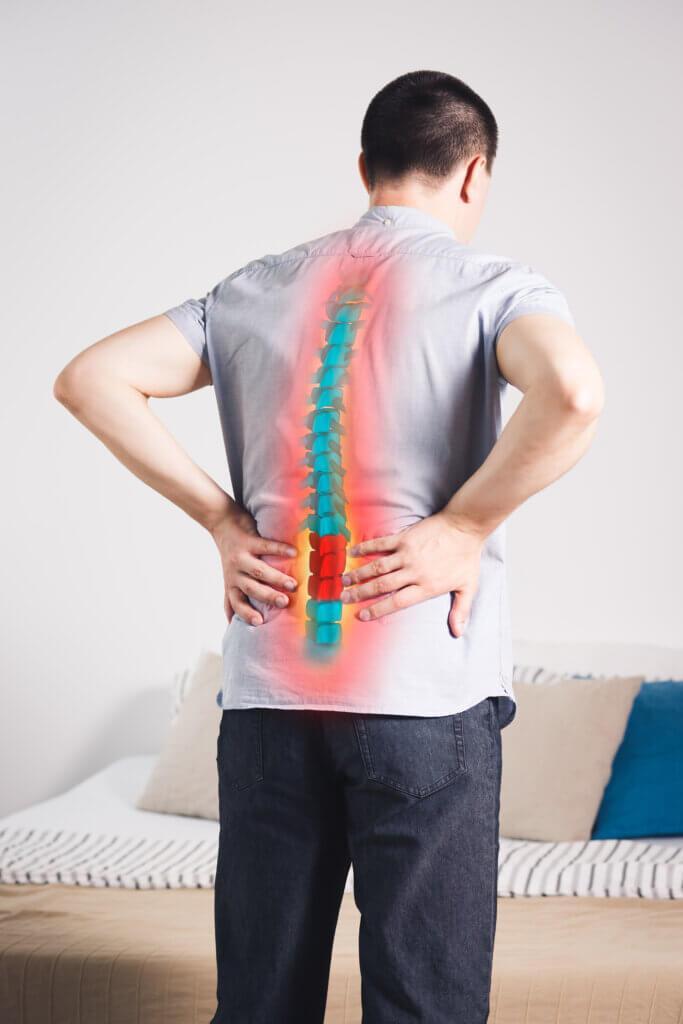
3. You’ve Been Told You Have Spinal Stenosis
Spinal stenosis of the lumbar (lower back) is a condition where the spaces in your spine narrow, putting pressure on the nerves. It’s a common cause of chronic pain and stiffness that often accompanies aging.
MRI results might show spinal stenosis on MRI, and your provider may mention a spinal stenosis procedure or even a spinal stenosis operation if symptoms are severe.
But surgery isn’t the only option.
Non-surgical decompression gently stretches the spine and increases circulation, often reducing the need for invasive procedures and helping you improve back mobility without downtime.
4. You’re Tired Of Living On Painkillers: Vertebral Decompression Therapy Can Help
Pain medications can offer temporary relief—but they don’t fix the problem. And as your dependence grows, they can cause more problems than they fix—at home and work.
If you’re relying on pills to function, it might be time to look at long-term solutions. Vertebral decompression therapy can provide real herniated disc pain relief by treating the root cause: pressure and inflammation around the disc and nerve.
Many of our patients are able to reduce or eliminate their reliance on NSAIDs, muscle relaxers and even opioids within weeks of starting care.
Special Note: you should never suddenly stop taking prescribed medications without speaking with your doctor. We can discuss a safe medication reduction plan with the prescribing physician as your body begins to heal.
Download our Spinal Decompression Therapy Brochure
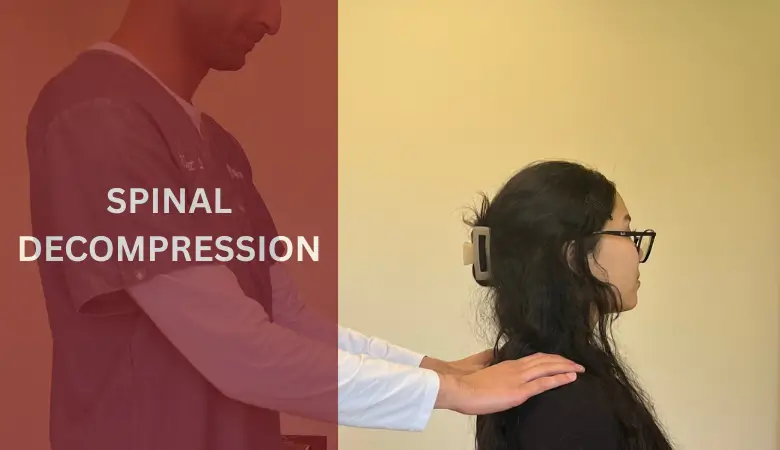
5. Physical Therapy And Chiropractic Alone Haven’t Solved It
You’ve tried stretches, spinal adjustments, and core strengthening. And while they’ve helped a little, the pain keeps coming back.
Sound familiar?
That’s often because your discs need more space to recover. When the vertebrae compress the disc too much—especially with a bulging disc in the back—your healing hits a wall.
A chiropractic adjustment can move that disc back into place at the moment, but without a more lasting solution, it can shift back into misalignment within weeks.
Decompression therapy combined with core strength exercises can be the missing piece in a chiropractic care plan, restoring that lost height and giving your spinal nerves room to do their jobs.

6. You Sit (Or Stand) All Day And Feel Stiff And Sore
Desk workers, retail employees, and drivers—we see you.
Long hours in one position can lead to compressed spinal discs, tight muscles, and reduced circulation. Over time, this can cause:
- A bulging disc
- Neck pain or shoulder blade pain
- Stiffness when you try to move
- Pain when bending or twisting
Spinal decompression isn’t just for injury. It’s also great for improving mobility in the spine and keeping you moving comfortably—especially if your job requires repetitive movement or staying still for hours.
FDA-cleared, targeted spinal decompression therapy can help. Learn more about how our specialized DoC table works here.
7. You Want To Avoid Surgery Or Injections
Many patients come to us after hearing their only options are injections or surgery.
They don’t want downtime.
They don’t want side effects.
And they don’t want to go under the knife unless absolutely necessary.
Vertebral decompression therapy is a non-invasive, low-risk alternative that offers real relief for many conditions. It’s particularly helpful for:
- Herniated disc in the lower back
- Spinal stenosis of the lumbar spine
- Bulging disc in the cervical spine
- Pinched nerve in the spine
For many people, this is the last step before considering surgery—and more often than not, it works.
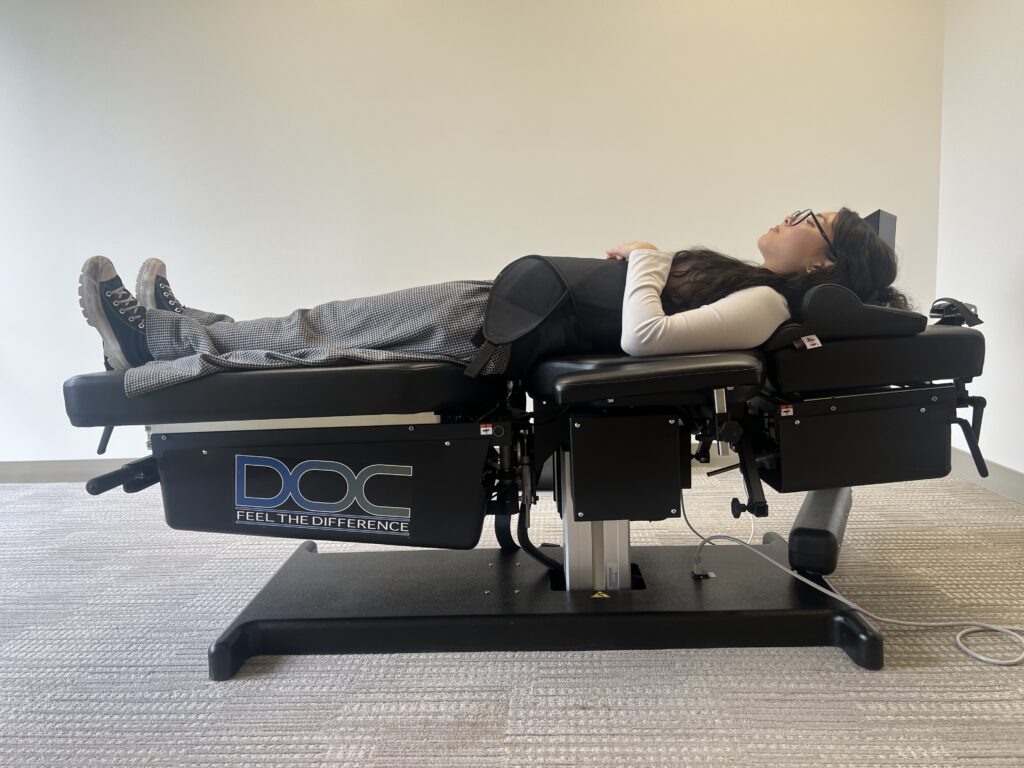
Vertebral Decompression Therapy: The Non-Surgical Solution for Pain
Living with chronic back or neck pain can feel like a dead end. But it doesn’t have to be.
Vertebral decompression therapy is a safe, effective option for treating everything from a herniated disc in the lumbar to a pinched nerve in the cervical spine. Whether you’re facing a sciatica flare-up, spinal stenosis, or constant stiffness from a bulging disc, you don’t have to just “deal with it.”
Pain may be common, but it’s not normal.
If any of these signs sound familiar, it might be time to talk with your chiropractor about vertebral decompression therapy. It could be the turning point your spine—and your life—needs.
